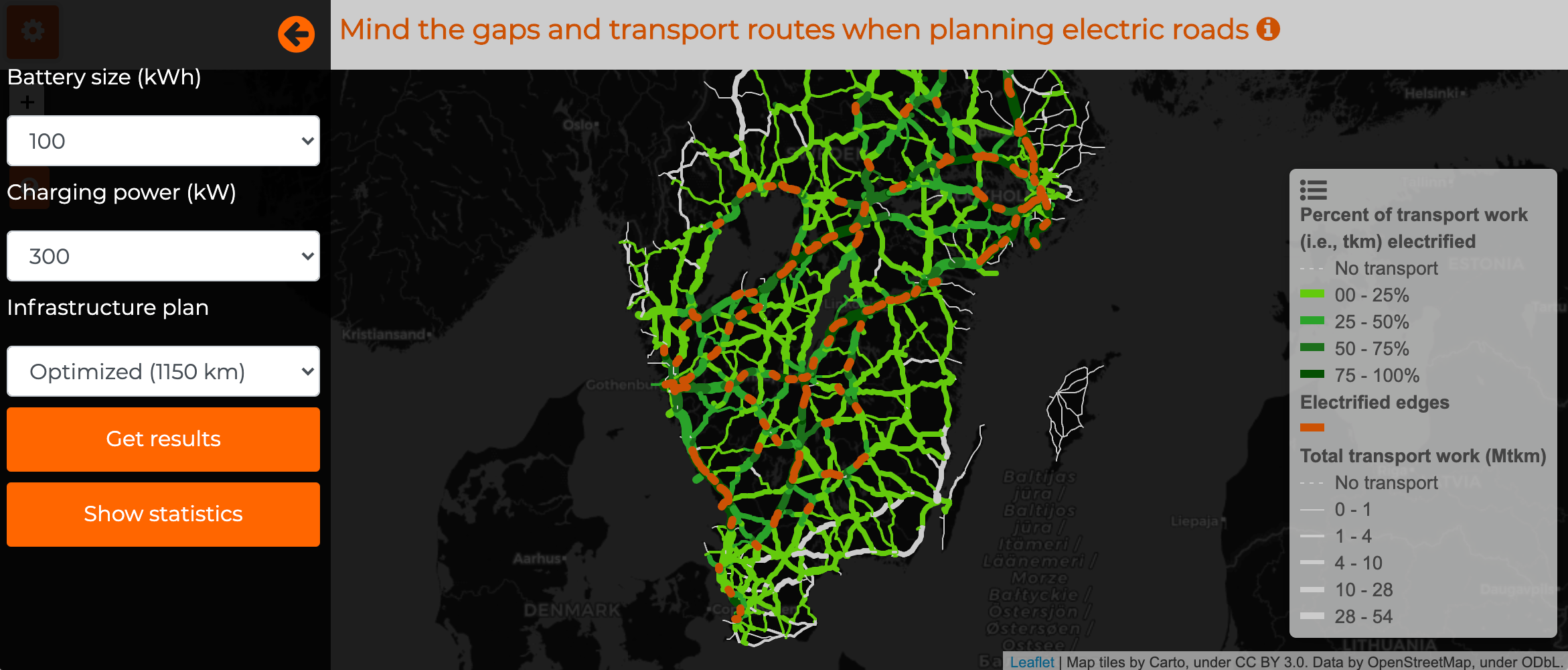LOLA – Cost-benefit Optimized Charging Infrastructure

This project models, integrates, and evaluates the impact of power production and distribution costs on optimal electric charging infrastructure placement. It explores cost variability, correlations, and their effects on placement, mix, and sizing.
Summary
The cost-benefit optimization of charging infrastructure is important and challenging from a computational and modelling perspective. The aim of this project is to model, integrate and evaluate the importance of electric power production and distribution costs in electric charging infrastructure (charging stations and electric roads) placement optimizations. The project will answer research questions primarily related to the modelling of the variability and correlations in of the costs and its effects on the optimal placement, mix and dimensioning of charging infrastructure types.
Background
Electrification is a widely discussed, researched, politically supported, and arguably cost-effective and feasible pathway for the decarbonization of the transport sector. This pathway includes many components with many parameters: vehicle, energy storage / batteries, stationary and dynamic charging infrastructure, and last but not least electricity production and transmission systems. Recent research for the case of electric road for heavy freight vehicles has shown that electric roads can especially be economically viable if one electrifies “vital” stretches of the roads according to the transport need. In particular, in the RENO (Route Based ERS Network Optimization) project it is shown that optimized placement of electrified stretches, according to transport routes, electrifies up to 3.25 times more transport work (tkm) / removes 3.25 times more CO2-emissions or need 80% less transport infrastructure development (a saving of up to SEK 12 billion for Sweden) compared with the electrification motorways along the largest transport corridors.
The RENO methods are centered around the newly introduced concept of Route Based Electrification Utility (RBEU), which can be informally defined as the extra transport work that can be performed in electric operations because of the electrification of the road network segment in question. The RENO methods and the RBEU concept can in general be extended to other types of charging infrastructure such as stationary charging stations.
However, currently the RENO methods completely disregard the development and operational costs of electric power production and distribution. These costs are conjectured to be 1) varying in space and time, 2) a function of the required power effect and 3) auto-correlated due to the variance in electric supply and demand, the topology and components needed in the electric distribution network and the spatial variance of land value and characteristic of the physical environment that influence infrastructure development costs. Understanding these cost variances in relation to the benefit of charging infrastructure (energy- and CO2 reduction in different segments of the transports sector) is not only important to guide the optimal placement of charging infrastructure, but is also essential to dimension the electric power system for charging infrastructure and to potentially implement charging policies that try to spread the energy demand from transports to match it with the energy supply of the electric power system.
Aim
To model, integrate and evaluate the importance of electric power production and distribution costs in electric charging infrastructure (charging stations and electric roads) placement optimizations.
Expected result:
- Methods and models, competence and knowledge building, and information and analysis about optimized charging infrastructure
- Report including:
- Description of the energy production and distribution cost model
- High level description of the integration of the model in the extended RENO framework
- Cost-benefit optimized infrastructure placement, mix and dimensioning results and evaluations in terms of statistics, maps and data.
- One peer-review conference or journal publication
Read more
Maximizing the ROI of charging infrastructures (www.emobilitycentre.se)

